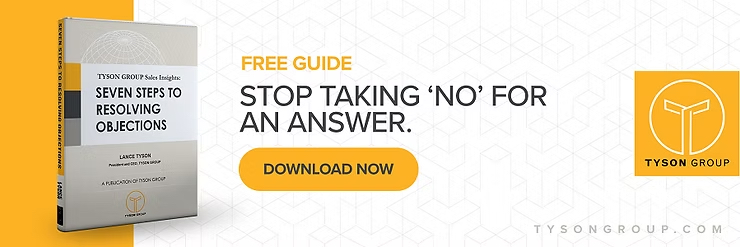In one of our sales training sessions, a participant asked me for ideas on how to avoid some of the objections she was getting from her prospects. Now, in these situations, my experience is if one person asks a question, then there are at least 5 other people with the same question simmering just below the surface. And for a hot topic like this, the majority of salespeople want some way to resolve their prospects’ sales objections that not only makes them look good and helps them get to close deals faster.
Before we jump into how to resolve sales objections, realize that the majority of salespeople actively avoid encountering objections, as if an objection was the equivalent to saying “your product or service isn’t good enough” or “you did something wrong in the sales process.”
What your salespeople must first realize is that sales objections are a natural part of the sales negotiation process. Real sales objections, ironically, signify a prospect’s interest in your offer. They are not something that must be overcome. They are problems that must be resolved. Once your salespeople realize this fact, they put themselves in a better position to address their customer’s concerns.
So, the first task for your salespeople is to determine if the objection is really a sales objection and not merely a tactic to push them out the door. To do this, your people must ask their prospect if their concern is legitimate, but they have to do it in a way that doesn’t put the prospect or customer on the defensive.
Enhance your salespeople’s effectiveness with the full process. Download the guide, Seven Steps to Resolving Sales Objections here.
Keep this in mind as we briefly review the step by step process to resolve sales objections
Process to Resolve Sales Objections
- Bridge their statement and acknowledge their concerns. This gives you rapport with the prospect instead of preparing your relationship for a confrontation.
- Ask a question for clarification. You never know what a prospect means when they voice an objection. Instead of guessing or assuming you know what they’re talking about, ask them to define, defend, and explain their concern..
- Verify that this is their primary concern. Give them the option to identify other areas that may be troubling them. An easy way to do this is by asking, “In addition to this, is there anything else?”
- Test their state with a trial close. If they are truly interested in your offer and this is a legitimate concern, they’ll respond in the positive. However, if this is a smoke screen or a quick response to get rid of you, they’ll respond in the negative.
- For those that hesitate or respond in the negative, ask them what else is holding them back. Simply state the obvious and inquire: “Bob, there appears to be something else holding you back. Do you mind if I ask what that is?”
- When they tell you what else is bothering them about your offering, contrast their two concerns and ask the prospect which one is more important.
- Lastly, use questions to perform a trial close and determine if resolving the new condition allows the sale to move forward.
Supplement the Process of Resolving Sales Objections With These Ideas
Here are some supplemental tips for your salespeople when they’re resolving sales objections:
- Avoid being confrontational or argumentative. As the salesperson, you are there to negotiate. Find points of agreement.
- Don’t tell your prospect that they are wrong. Telling your prospect or customer that they are wrong sets the stage for a confrontation. Instead, acknowledge where they are mentally and lead them to where you want them to go. Everyone is entitled to their opinion. You don’t want to take those opinions away. However, you do want to offer them alternatives and let them choose the better option..
- Your presentation matters. If all you had to do was present facts, you could give your prospect the user manual or the brochure. The facts you use to counter an objection need the appropriate presentation suited for the audience. Deliver your evidence using an appropriate amount of dramatic flair to make your point. Anytime you can use your presentation skills to make unfamiliar concepts easily understood, do it and you’ll effectively deal with most of the objections you’ll encounter.
Remember, when you encounter a real sales objection, it’s an indication that your prospect or client is genuinely interested in your proposed solution. Take some time to investigate the objection and use the opportunity to move the sales forward.
Good Selling!





